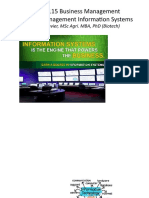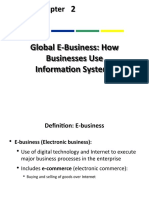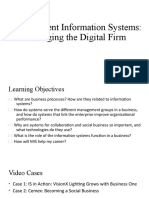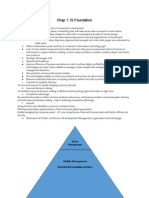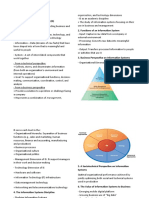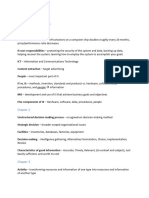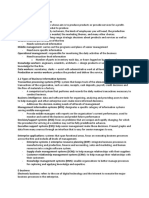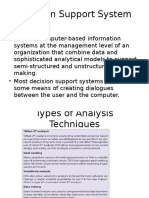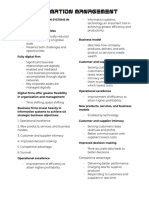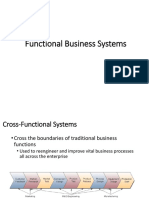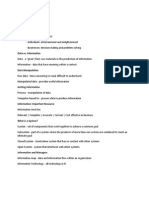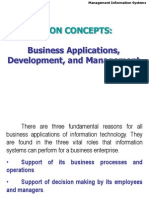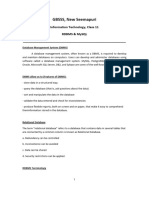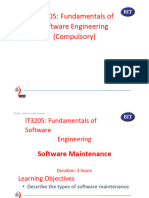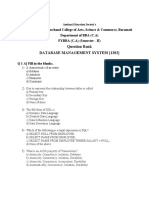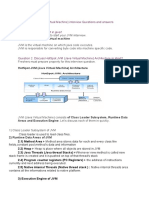HNDIT1042
Information
Management and
Information
Systems
Week3
1
�Organizations and Management hierarchy Type of
information (Strategic, Tactical, Operational)-Continue…….
WEEK 3
2
�ENTERPRISE APPLICATIONS
3
� Enterprise Application
• Because of the organizational growth and
acquisition of smaller firms system become
collection of systems. Implement enterprise
application to getting them as a single system.
4
� Advantages
• Businesses become more flexible and
productive by coordinating their business
processes more closely and integrating groups
of processes.
• Efficient management of resources and
customer service.
5
� Four major enterprise applications
1. Enterprise systems
2. Supply chain management systems
3. Customer relationship management systems
4. Knowledge management systems.
6
�7
� 1. Enterprise Systems
• enterprise systems, also known as enterprise
resource planning (ERP) systems, to integrate
business processes in manufacturing and
production, finance and accounting, sales and
marketing, and human resources into a single
software system.
• Information that was previously fragmented in
many different systems is stored in a single
comprehensive data repository where it can be
used by many different parts of the business
8
�9
� Example for ERP
• when a customer places an order, the order data flow
automatically to other parts of the company that are affected by
them.
• The order transaction triggers the warehouse to pick the ordered
products and schedule shipment.
• The warehouse informs the factory to replenish whatever has
been depleted.
• The accounting department is notified to send the customer an
invoice.
• Customer service representatives track the progress of the order
through every step to inform customers about the status of their
orders.
• Managers are able to use firmwide information to make more
precise and timely decisions about daily operations and
longer-term planning.
10
�2. Supply chain management systems
• Help manage relationships with their suppliers.
• These systems help suppliers, purchasing firms,
distributors, and logistics companies share
information about orders, production, inventory
levels, and delivery of products and services
• The ultimate objective is to get the right amount
of their products from their source to their point
of consumption in the least amount of time and at
the lowest cost.
11
� Eg: the supply chain for Nike sneakers
• Nike designs, markets, and sells sneakers, socks, athletic clothing, and
accessories throughout the world.
• Its primary suppliers are contract manufacturers with factories in China,
Thailand, Indonesia, Brazil, and other countries.
• These companies fashion Nike’s finished products.
• Nike’s contract suppliers do not manufacture sneakers from scratch. They
obtain components for the sneakers—the laces, eyelets, uppers, and
soles—from other suppliers and then assemble them into finished
sneakers.
• These suppliers in turn have their own suppliers. For example, the
suppliers of soles have suppliers for synthetic rubber, suppliers for
chemicals used to melt the rubber for molding, and suppliers for the
molds into which to pour the rubber.
• Suppliers of laces have suppliers for their thread, for dyes, and for the
plastic lace tips.
12
�• Chart illustration of Nike’s supply chain for sneakers; it
shows the flow of information and materials among
suppliers, Nike, Nike’s distributors, retailers, and
customers. Nike’s contract manufacturers are
13
�14
� Advantages
• Increase firm profitability by lowering the
costs of moving and making products.
• Enabling managers to make better decisions
about how to organize and schedule sourcing,
production, and distribution.
15
�3. Customer relationship management
systems
• (CRM) systems to help manage their
relationships with their customers.
• CRM systems provide information to
coordinate all of the business processes that
deal with customers in sales, marketing, and
service to optimize revenue, customer
satisfaction, and customer retention.
16
� Advantages
• This information helps firms identify, attract,
and retain the most profitable customers;
• provide better service to existing customers;
• increase sales.
17
� CRM..
• CRM capture and integrate customer data
from all over the organization, consolidate the
data, analyze the data, and then distribute the
results to various systems and customer touch
points across the enterprise.
18
� Touch point
• A touch point (also known as a contact point)
is a method of interaction with the customer.
Eg: telephone, e-mail, customer service desk,
conventional mail, Facebook, Twitter, Web site,
wireless device, or retail store.
19
�20
�Good CRM systems provide data and
analytical tools for answering
questions such as these:
• What is the value of a particular customer to the
firm over his or her lifetime?
• Who are our most loyal customers?
• It can cost six times more to sell to a new
customer than to an existing customer.
• Who are our most profitable customers?
• What do these profitable customers want to
buy?
21
�4. Knowledge Management Systems
• Have better knowledge about how to create, produce,
and deliver products and services.
• This firm knowledge is unique, difficult to imitate, and
can be leveraged into long-term strategic benefits.
• Knowledge management systems (KMS) enable
organizations to better manage processes for
capturing and applying knowledge and expertise.
• These systems collect all relevant knowledge and
experience in the firm, and make it available wherever
and whenever it is needed to improve business
processes and management decisions.
22
�• Three major types of knowledge management
systems:
1. enterprise-wide knowledge management systems
2. knowledge work systems
3. intelligent techniques
23
� 1. enterprise-wide knowledge
management systems
• General-purpose firmwide efforts to collect, store,
distribute, and apply digital content and knowledge.
• These systems include capabilities for searching for
information, storing both structured and unstructured
data, and locating employee expertise within the firm.
• supporting technologies are:
– portal
– search engines
– collaboration and social business tools
– learning management systems.
24
�2. Knowledge work systems (KWS)
• Specialized systems built for engineers,
scientists, and other knowledge workers
charged with discovering and creating new
knowledge for a company
25
�26
� EXAMPLES OF KNOWLEDGE WORK
SYSTEMS
• CAD systems
• virtual reality systems for simulation and
modeling
• financial workstations.
27
� CAD
• Computer-aided design (CAD) automates the
creation and revision of designs, using
computers and sophisticated graphics
software.
28
� virtual reality systems for simulation
and modeling
• Virtual reality systems have visualization,
rendering, and simulation capabilities that go
far beyond those of conventional CAD
systems.
29
� example
• Ford Motor Company has been using virtual reality to help
design its vehicles.
• In one example of Ford’s Immersive Virtual Environment, a
designer was presented with a car seat, steering wheel, and
blank dashboard.
• Wearing virtual reality glasses and gloves with sensors, the
designer was able to “sit” in the seat surrounded by the
vehicle's 3-D design to experience how a proposed interior
would look and feel. The designer would be able to identify
blind spots or see if knobs were in an awkward place.
• Ford’s designers could also use this technology to see the
impact of a design on manufacturing.
30
� Augmented reality (AR)
• It is a related technology for enhancing
visualization.
• AR provides a live direct or indirect view of a
physical real-world environment whose elements
are augmented by virtual computer-generated
imagery.
• The user is grounded in the real physical world,
and the virtual images are merged with the real
view to create the augmented display.
31
� Virtual Reality Modeling Language
(VRML).
• VRML is a set of specifications for interactive,
3-D modeling on the World Wide Web that
can organize multiple media types, including
animation, images, and audio to put users in a
simulated real-world environment.
• VRML is platform independent, operates over
a desktop computer, and requires little
bandwidth.
32
�example
33
�• What Is the Difference Between AR and VR?
34
� financial workstations
• The financial industry is using specialized
investment workstations such as Bloomberg
Terminals to leverage the knowledge and time
of its brokers, traders, and portfolio
managers.
35
�The Bloomberg Terminal is a computer software system provided by
the financial data vendor Bloomberg L.P. that enables professionals in the
financial service sector and other industries to access Bloomberg Professional
Services through which users can monitor and analyze real-time
financial market data and place trades on the electronic trading platform
36
�37
� 3. intelligent techniques
• Artificial intelligence and database technology
provide a number of intelligent techniques
that organizations can use to capture
individual and collective knowledge and to
extend their knowledge base.
– Expert systems, case-based reasoning,
– fuzzy logic are used for capturing tacit knowledge.
– Neural networks and data mining are used for
knowledge discovery.
38
�END
39


